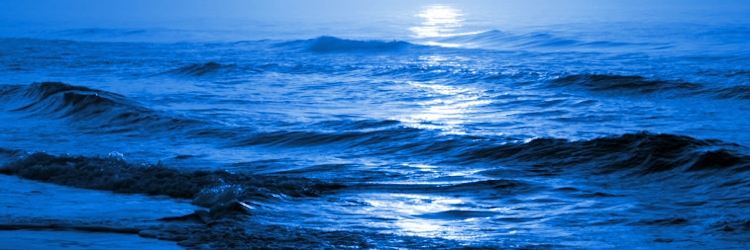Ozone Hole
Changes in the Stratosphere

Author
Lisa Ayers Lawrence, Virginia Sea Grant, Virginia Institute of Marine Science
Grade Level
8 - 12
Lesson Time
45 min. - 1 hr.
Objectives
- Describe the causes of ozone depletion.
- Evaluate changes in ozone using world maps and the Dobson scale.
- Propose possible effects of ozone depletion on the ocean environment.
Ozone, Chlorofluorocarbons, Stratosphere , Troposphere
Materials Required
Notes
If the animation takes too long to load, proceed with the activity using the link to "October images for every five years starting with 1979." Credits
NASA Earth Observatory
Summary
Using data from the NASA Earth Observatory, evaluate changes in ozone levels throughout the past 35 years.
Image courtesy of the NASA Earth Observatory.
The ozone "hole" is a severe depletion of the ozone layer above Antarctica that was first detected in the 1980s. The Antarctic ozone hole forms and expands during the Southern Hemisphere spring (August and September) because of the high levels of chemically active forms of chlorine and bromine in the stratosphere. These chlorine- and bromine-containing molecules are largely derived from man-made chemicals that steadily increased in Earth’s atmosphere up through the early 1990s. In the last 35 years, this area has grown as large as 10.9 million square miles at it's peak (October 2015).—That's more than 2.5 times the size of the United States!
Ozone (O3) is present throughout the atmosphere in small amounts, but forms a layer in the stratosphere (the layer of the atmosphere just above the troposphere, where we are). This ozone layer helps to filter out more than 95% of the sun's harmful UV-B rays, making the earth a habitable place.
In the 1970s, scientists discovered that the amount of ozone in the stratosphere was decreasing, and although ozone levels fluctuate naturally these fluctuations could not account for such a dramatic loss. At that time, CFCs were considered to be miracle chemicals and were widely used in aerosols, refrigeration systems, and cleaning solvents. Chemists Frank Sherwood Rowland and Mario Molina began to study what happened to CFCs released into the atmosphere. They discovered that as CFCs rise high in the atmosphere, they are broken down by solar radiation releasing chlorine atoms. Under the right conditions these chlorine atoms break down ozone into oxygen (O2). This loss in ozone was found to be most severe over Antarctica in October of each year. Although this is a simplified explanation of the complicated chemical process of ozone loss, it paints a good picture of the effects humans have on the ozone layer. Drs. Rowland and Molina later shared the Nobel Prize in chemistry with another man for their work on ozone.
Once it was discovered that CFCs were contributing to ozone loss, nations around the world got together and signed the Montreal Protocol of 1987 to reduce the amount of CFCs produced. The goal of the Montreal Protocol and its amendments was to eliminate the production of CFCs in developed countries by 1996. Although the world is well on its way to CFC reduction, a significant black market for CFCs exists, slowing progress of complete CFC elimination.
Data Activity
Data Activity
NASA has an excellent data website called Earth Observatory that we will access for ozone data. From the Earth Observatory main page, click on Atmosphere under Visible Earth. From there, click on Ozone under Reference. Under Related Data Sets, select Ozone. We will generate an animation of ozone levels from November 1978 to September 2001 by entering the following variables under How to build animations:
- Start Month: November
- Start Year: 1978
- End Month: September
- End Year: 2001
- Click Build Animation button.
Once the animation plays, you can look at it frame by frame using your right and left arrow keys. Areas on the animation that are blue in color show significant thinning of the ozone layer. Let's look at the most severe thinning of the ozone — the area over Antarctica during the month of October. For ease of viewing, we have downloaded from the Earth Observatory the October images for every five years starting with 1979.
- What has happened to the ozone layer over Antarctica from 1979 to 1999 (keep in mind that the darker the blue the thinner the ozone)?
- What are the causes of ozone depletion?
- If peak use of CFCs occurred in the 1970s, why isn't signifcant ozone depletion seen until the 1980s?
- Why does the ozone hole occur over Antarctica? (Click here for a scientific explanation.)
- What impacts might the ozone hole and its resulting increase in UV-B rays have on the ocean environment? (Here are articles about the effects of UV-B on fish and phytoplankton.)
- Now that the ozone hole has stopped increasing in size, predict how long you think it will take to get back to the levels of the 1970s.